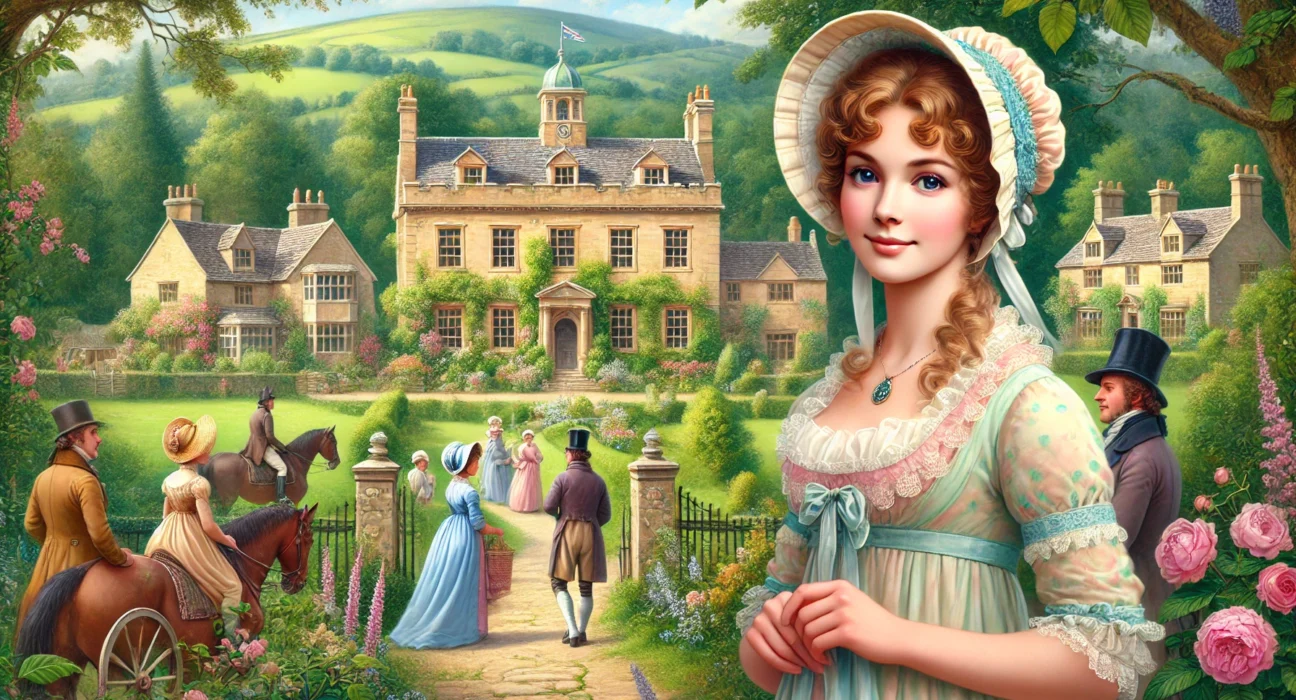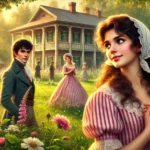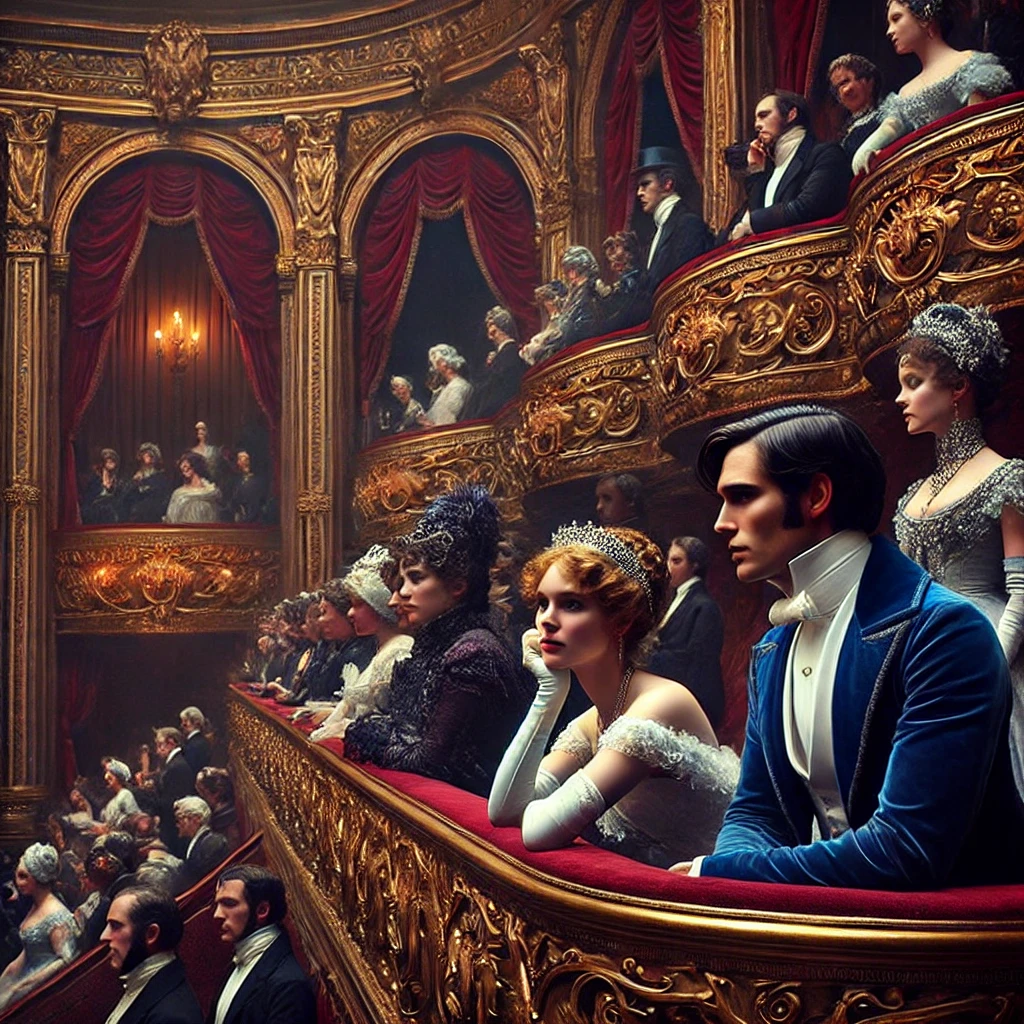Emma is a novel by Jane Austen, first published in 1816, that explores themes of social class, romantic relationships, and the intricacies of human behavior. The story centers around Emma Woodhouse, a wealthy and self-assured young woman, who believes she has a talent for matchmaking, often meddling in the lives of those around her. However, Emma’s attempts to orchestrate others’ romantic lives lead to unexpected complications, misunderstandings, and personal growth. This novel is notable for its exploration of a protagonist who is flawed yet ultimately likable, as well as for Austen’s signature wit, social commentary, and deep insights into the human condition.
Plot Summary
In the quiet village of Highbury, Emma Woodhouse, a young woman of wealth and privilege, was content with her life. At twenty-one, she was independent, beautiful, and clever, having lived her entire life in comfort with her indulgent father. Emma had no wish for love or marriage for herself, but she found great amusement in managing the lives of others. Recently, she had taken pride in her matchmaking success, as her former governess, Miss Taylor, had just married the good-natured Mr. Weston. This event bolstered Emma’s belief in her ability to shape destinies, and she turned her attention to a new project: finding a suitable husband for her friend, Harriet Smith.
Harriet, a sweet and naïve girl of uncertain parentage, was eager to be guided by Emma. When Mr. Martin, a respectable young farmer, proposed to Harriet, Emma swiftly intervened. She believed Harriet was destined for greater things than marriage to a mere farmer and persuaded her to reject the offer. Instead, Emma set her sights on Mr. Elton, the local vicar, as a far more suitable match. Confident in her abilities, Emma misread Mr. Elton’s attentions, assuming they were directed toward Harriet.
As Emma orchestrated opportunities for Harriet and Mr. Elton to spend time together, she believed her plan was unfolding smoothly. It was only during a carriage ride after a Christmas party that Emma realized how wrong she had been. Mr. Elton, far from being interested in Harriet, professed his love for Emma herself. Shocked and embarrassed, Emma rejected his proposal, and Mr. Elton left town shortly afterward. His return, with a new wife in tow—Mrs. Elton, a vain and self-important woman—only deepened Emma’s regret for her earlier actions.
Meanwhile, Mr. Weston’s son, Frank Churchill, arrived in Highbury. Frank had been raised by wealthy relatives after his mother’s death and was known for his charm and good looks. His arrival caused quite a stir in the village, and Emma soon found herself drawn to him. Frank’s flirtatious behavior, particularly toward Emma, made her think he might be a suitable match for herself. But she also suspected he harbored feelings for the reserved and elegant Jane Fairfax, a young woman who had returned to Highbury to stay with her impoverished aunt, Miss Bates.
Jane was everything Emma was not: quiet, accomplished, and without Emma’s financial independence. Though Emma felt a sense of rivalry with Jane, particularly over Frank’s attention, she dismissed these feelings, believing that Frank’s playful flirtations with her signaled something more. Yet, even as Emma entertained romantic notions about Frank, she never truly loved him. Instead, she found herself caught in the excitement of his presence and the mystery of his actions.
Amid these social entanglements, Harriet’s affections shifted once again. Having been encouraged by Emma to set her sights higher, Harriet now believed she was in love with a man of superior status. Emma, assuming Harriet’s admiration was for Frank Churchill, supported the idea. But when Harriet confided that it was Mr. Knightley—Emma’s long-time friend and confidant—who had captured her heart, Emma’s world was shaken.
Suddenly, Emma realized that she, too, had feelings for Mr. Knightley. She had always relied on him as a friend and advisor, but now she saw him in a new light. With this realization came fear—fear that her interference in Harriet’s life had pushed her dearest friend into the arms of another. Emma, who had never before contemplated love for herself, now found herself in love with Mr. Knightley, yet uncertain if he could ever feel the same.
As Emma grappled with her emotions, the truth about Frank Churchill’s behavior came to light. He had been secretly engaged to Jane Fairfax all along. The secrecy was necessary due to his aunt’s disapproval, but the revelation left Emma relieved rather than heartbroken. She had never truly been in love with Frank, and his engagement to Jane lifted the burden of any romantic expectations she had for him.
With Frank’s secret revealed and his engagement to Jane public, Emma turned her thoughts to Mr. Knightley. She feared that Harriet’s feelings might drive a wedge between them, but to her great relief, Mr. Knightley confessed his love for her. He had loved her for years, watching her grow from a clever but headstrong girl into a woman of wit and intelligence. Emma, humbled and grateful, accepted his proposal, realizing that true love had been close to her all along.
Harriet, though initially disheartened, found happiness elsewhere. Mr. Martin, whose earlier proposal she had rejected under Emma’s influence, remained devoted to her. This time, when Mr. Martin proposed again, Harriet accepted, and they were soon happily married. Emma, reflecting on her past meddling, understood that she had underestimated the value of true affection, regardless of social status.
In the end, three marriages brought joy to Highbury: Harriet and Mr. Martin, Jane Fairfax and Frank Churchill, and Emma and Mr. Knightley. Emma had learned that love could not be arranged or manipulated and that her own happiness was found not in controlling others but in mutual understanding and respect. Her bond with Mr. Knightley, built on years of friendship and trust, promised a life of contentment and true partnership.
As the weddings took place, Highbury settled into a peaceful rhythm once again. Emma, once so certain of her abilities to shape the lives of others, found herself wiser, more compassionate, and ready for the future—a future where love had come to her not through her efforts, but in its own natural and unexpected way.
Main Characters
Emma Woodhouse: The protagonist of the story, Emma is a wealthy, beautiful, and intelligent young woman, but also overly confident in her own judgment. At the start of the novel, she believes herself to be a skilled matchmaker and takes pride in orchestrating the romantic lives of those around her. However, she is often blind to her own flaws and misreads the emotions and intentions of others. Her character arc revolves around learning humility, understanding love, and overcoming her self-imposed isolation.
Mr. Knightley: A close family friend of the Woodhouses, Mr. Knightley is Emma’s most trusted advisor. He is about 16 years older than Emma and serves as a moral compass for her, often gently pointing out her mistakes. Mr. Knightley is sensible, kind, and fair, and over time, his feelings for Emma evolve into a deep love that she eventually reciprocates.
Harriet Smith: A sweet but naive young woman of uncertain parentage, Harriet becomes Emma’s protégé in matchmaking. Harriet’s malleability allows Emma to project her own desires onto her, but Harriet’s natural inclinations often conflict with Emma’s plans. Harriet plays a crucial role in Emma’s journey toward self-awareness.
Mr. Elton: A local vicar who is the subject of Emma’s matchmaking attempts. Emma mistakenly believes he is in love with Harriet, when in fact, he harbors affections for Emma herself. Mr. Elton’s eventual behavior exposes his vanity and social climbing, highlighting the novel’s critique of self-delusion and social pretension.
Frank Churchill: The charming and enigmatic son of Mr. Weston, Frank is admired by many in Highbury, including Emma, who believes he is romantically interested in her. His secret engagement to Jane Fairfax is one of the major twists in the story, revealing the dangers of hidden intentions and social appearances.
Jane Fairfax: An orphaned young woman raised by her relatives, Jane is accomplished, beautiful, and reserved. She serves as a foil to Emma, embodying qualities like modesty and restraint, which contrast with Emma’s more headstrong and privileged nature. Jane’s secret engagement to Frank Churchill adds complexity to the plot, showcasing the theme of hidden emotions and societal pressures.
Miss Bates: A talkative but good-natured woman who lives in reduced circumstances. Miss Bates represents the consequences of falling in social status, and her presence in the story serves as a moral lesson to Emma about empathy and kindness.
Theme
Social Class and Marriage: One of the central themes of Emma is the role of social class in relationships and marriage. The novel explores how societal expectations influence romantic choices and the complex dynamics between love, wealth, and social status. Emma’s misguided attempts at matchmaking often stem from her assumptions about what is appropriate or advantageous for someone’s social standing, and her personal growth involves reassessing these values.
Self-Deception and Personal Growth: Emma’s journey is largely one of self-realization, as she frequently misinterprets the emotions and intentions of those around her, particularly in matters of love. Her overconfidence in her matchmaking abilities and her lack of insight into her own feelings lead to misunderstandings and mistakes. The novel follows her path toward humility, self-awareness, and emotional maturity.
The Role of Women: The novel reflects on the limited roles available to women in 19th-century England. Through characters like Emma, Harriet, and Jane, Austen examines how marriage, social class, and financial security shape women’s lives and their opportunities for independence. Emma’s privileged position allows her a greater degree of freedom, but even she must navigate societal expectations.
Friendship and Companionship: Relationships of various kinds—romantic, familial, and platonic—are central to the novel. The friendship between Emma and Harriet, as well as Emma’s evolving bond with Mr. Knightley, highlights the importance of genuine connection and mutual respect. Emma’s misunderstandings often stem from her lack of insight into the true nature of friendship and affection.
Irony and Social Critique: Austen is known for her use of irony to critique the social norms and behaviors of her time. In Emma, irony is particularly evident in the disparity between Emma’s perception of events and the reality of the situation. This tension not only drives the humor of the novel but also serves as a commentary on the folly of self-delusion and the limitations of social conventions.
Writing Style and Tone
Jane Austen’s writing style in Emma is characterized by her use of free indirect speech, a narrative technique that allows the reader to slip between the narrator’s voice and the character’s thoughts. This creates a rich, layered narrative where the reader can simultaneously see the world from Emma’s perspective while also being aware of her limitations and misunderstandings. Austen’s skill in subtly shifting between the objective and subjective offers a nuanced exploration of her protagonist’s psychology, particularly Emma’s gradual self-discovery.
The tone of the novel is witty and ironic, with Austen using humor to critique the social mores of early 19th-century England. Emma’s flawed character serves as both a source of amusement and a vehicle for deeper moral lessons. While the novel often adopts a light and playful tone, it is underpinned by serious reflections on human nature, class, and the constraints placed on women. Austen’s use of irony sharpens her social critique, especially when Emma’s naivety and overconfidence lead to humorous but instructive consequences.
We hope this summary has sparked your interest and would appreciate you following Celsius 233 on social media:
There’s a treasure trove of other fascinating book summaries waiting for you. Check out our collection of stories that inspire, thrill, and provoke thought, just like this one by checking out the Book Shelf or the Library
Remember, while our summaries capture the essence, they can never replace the full experience of reading the book. If this summary intrigued you, consider diving into the complete story – buy the book and immerse yourself in the author’s original work.
If you want to request a book summary, click here.
When Saurabh is not working/watching football/reading books/traveling, you can reach him via Twitter/X, LinkedIn, or Threads
Restart reading!








